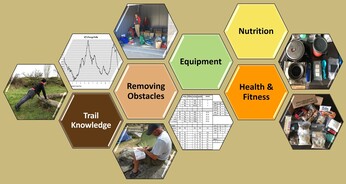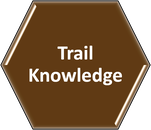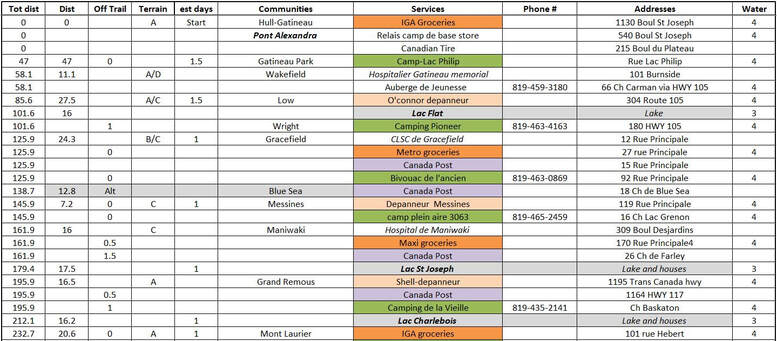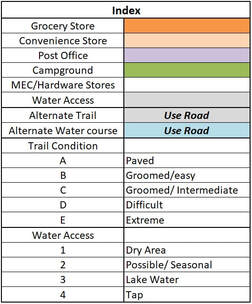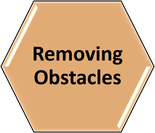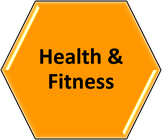|
Thanks to the great work of the Trans Canada Trail Organisation (website) and their members (Facebook and blogs), we acquired a good deal of the information needed to create our work sheet. Google maps and the trail app were also invaluable.
There were also provincial trail books available, but they were 10 years old and some of the information was no longer relevant or accurate. |
Our TCT Worksheets were created by province. They include distances between communities, trail ratings, water sources (their reliability), and grocery stores nearby. Our itinerary preparation is calculated with an average of 25 km/day for the TCT. Our research is a deep dive in order to understand locations of supplies and services. Along TCT, we have gathered this type of information using Google Maps, the TCT application map and various provincial books (most are 8-10 years old). This information is considered moderately accurate. We update our logbooks as we walk the trail - the Maritime Provinces, Quebec, and Ontario have been updated - as of January 2022.
|
We have built our logbooks by province (available below). In these datafiles, we have calculated; distances (both cumulative and between services), distance off-trail (if applicable) for any services, types of terrain expected, communities and services, phone numbers for campgrounds, addresses and water access. We use this information to plan our resupply points, understand when we need to carry more water, and where we can expect to rest and camp (maybe even shower!).
|
|
There are some alternate sections where the trail may be too rugged for our 'wheelie'. We have opted to use secondary roads in these areas. This may be useful for cyclists and others who want to stay away from very rugged trails. For significant water trail sections, we've also chosen some roadway alternatives.
The Index (right) is important to quickly decipher the type of services outlined in our logbooks. We hope that our research will be helpful for anyone planning to undertake significant sections of The Trans Canada Trail. |
Updated Provincial logbooks (post thru-hike) |
| |||||||||||||||||||||||||||||||||||||||||||||||||
Planning PROVINCIAL LOGBOOKS (pre THRU-HIKE)
The GPX Files are available from The TCT App - in the app, simply select the measuring tool (the ruler icon) then choose the 'export highlighted trail' option. A GPX will be available for download. We have not used these GPX Files, we found that the iPhone App using the GPS location is more than sufficient for our journey.
| |||||||||||||||||||||||||||||||||
Financial:
- There were a few campsites along the trail. Reservations were made onsite. Fees ranged from $30 to $60 per night.
- We planned on having rest days in some of the communities. The accommodations were booked onsite.
|
Time Commitment:
|
Health and Fitness:
- The terrain on the TCT ranged from flat to mountainous. Having a good fitness base and a good walking technique, helped minimise injuries.
- This trail was not always well marked and crossed many communities and city parks. Having some orienteering was advisable.
- Some backcountry camping skills and ‘leave no trace ‘camping practices were useful as stealth camping along the trail was often not permitted but necessary.
|
On the TCT, we carried water and our clothing in our backpacks. The Wheelie (our cart) carried the rest of our equipment.
|
- We used the Ohuhu wood burning stove and a Whisper-light stove with fuel cannisters for rehydration. The Ohuhu worked well for heating less than a liter of liquid, but for more volume we preferred the whisper-light stove. It boiled water quickly for our meals and hot drinks.
- As we crossed a community every 2-3 days, we did not carry a lot of dry food stores. We had a few soup bases and some instant rice. But we purchased most of our food from the local shops along the way.
- We carried luxury items such as our 2 camp chairs (which we used a lot during our breaks) and a few books (which we never read).
|
Our menu plan for this trek included a few soup bases, instant rice, and snacks such as nuts, dry fruit, and sausages. We purchased our supplies at local grocery stores along the way. Upon crossing a town, we would calculate the distance to the next grocery store and purchase enough goods to last us until then. The grocery stores made it possible to eat a lot of fresh foods most days.
Without fresh foods, our nutritional approach on the TCT was based on items we communally found in 'small town' grocery stores. mainly when away from towns for more than two days. The table is a basic outline of the food and its nutritional value. For additional information please refer to our general Nutrition web page. |
|
Our winter fitness program maintained a good base. But as the new walking season came about, we started increasing our walks.
For detailed information on our exercise routines check out our Exercise web page. |


